
The Longitudinal Section of Flower An Overview at BYJU’S
The students must use parts of a flower diagram to learn about the flowers and their reproductive cycle. 2.1 How to Create Parts of a Flower Diagram from Sketch The students can create the pictures by hand, but the process is complicated. For that, they need to follow these steps: Step 1: To begin with it, the students need to draw a stalk with.

Flower Anatomy 101 Floralife Blog
The four main parts of a flower are the petals, sepals, stamen, and carpel (sometimes known as a pistil). If a flower has all four of these key parts, it is considered to be a complete flower. If any one of these elements is missing, it is an incomplete flower. Complete. Rose.

Parts of a Flower
A flower having sepals, petals, stamens, and pistils is complete; lacking one or more of such structures, it is said to be incomplete.Stamens and pistils are not present together in all flowers. When both are present the flower is said to be perfect, or bisexual, regardless of a lack of any other part that renders it incomplete (see photograph).A flower that lacks stamens is pistillate, or.

Parts of a Flower — Mathwizurd
Parts of a Flower Diagram. A flower diagram typically consists of several key parts. At the center of a flower is a pistil (female part of a flower), which includes the stigma, the style, and the ovary. Surrounding the pistil are the stamens (the male part of a flower), each comprises of an anther and a filament. The petals, often colorful.

The Life Cycle Of A Flower Discover How Flowering Plants Reproduce
Peduncle: The stalk of a flower. Receptacle: The part of a flower stalk where the parts of the flower are attached. Sepal: The outer parts of the flower (often green and leaf-like) that enclose a developing bud. Petal: The parts of a flower that are often conspicuously colored. Stamen: The pollen producing part of a flower, usually with a slender filament supporting the anther.
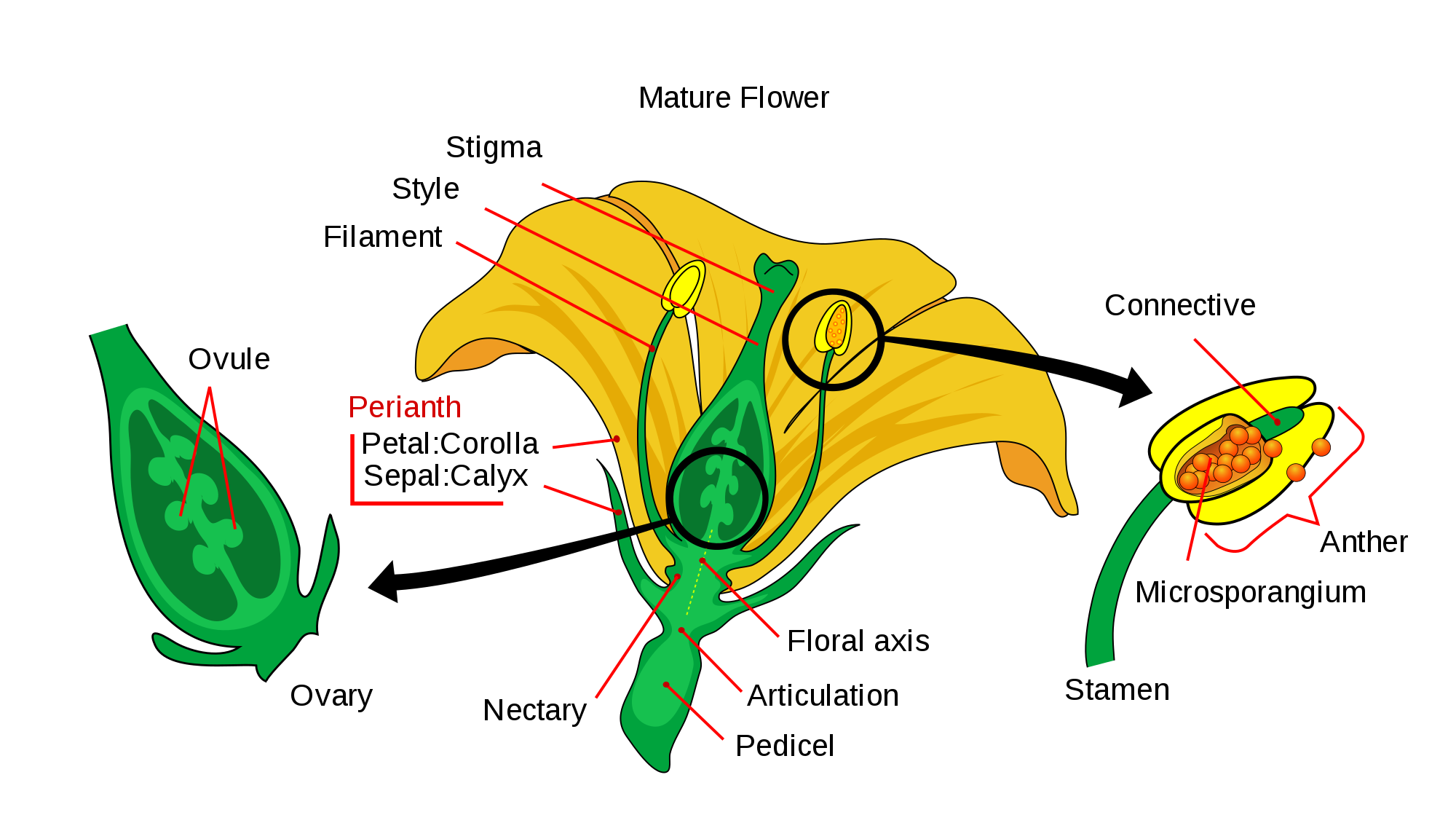
A typical flower and its parts Online Science Notes
In a flower diagram, stamen are located on both sides of the pistil. The stamen consists of two parts: Anther: The anther is the head of the stamen. It produces pollen. Filament: The filament is the stalk attached to the flower that holds the anther. The stamen's function is to produce male reproductive cells.
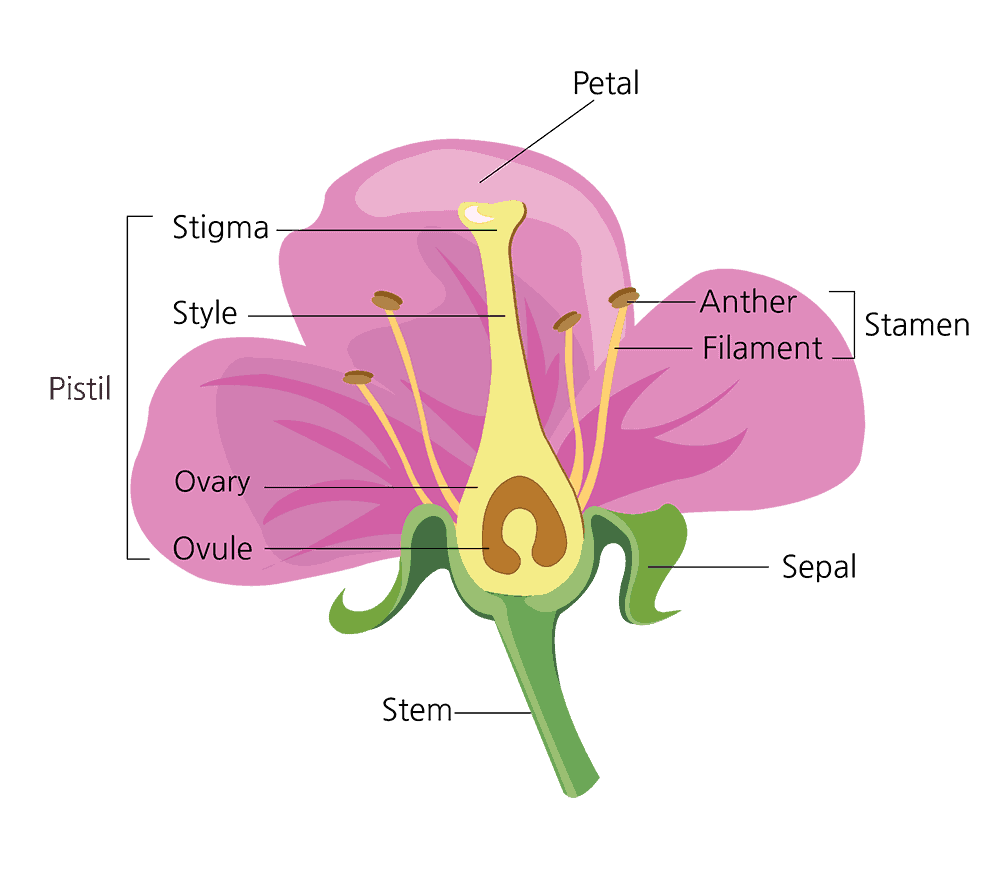
Parts of a Flower and Their Functions (With Diagram)
The male parts of a candy flower (Claytonia sibirica). (In the center of the flower, surrounded by the stamens, is a single pistil - the flower's female reproductive part.). Anther. The anther is the bulbous head at the tip of the filament. It contains microsporangia, or pollen sacs, in which pollen is produced.. Pollen is the microscopic, dust-like powder in which a plant's male.
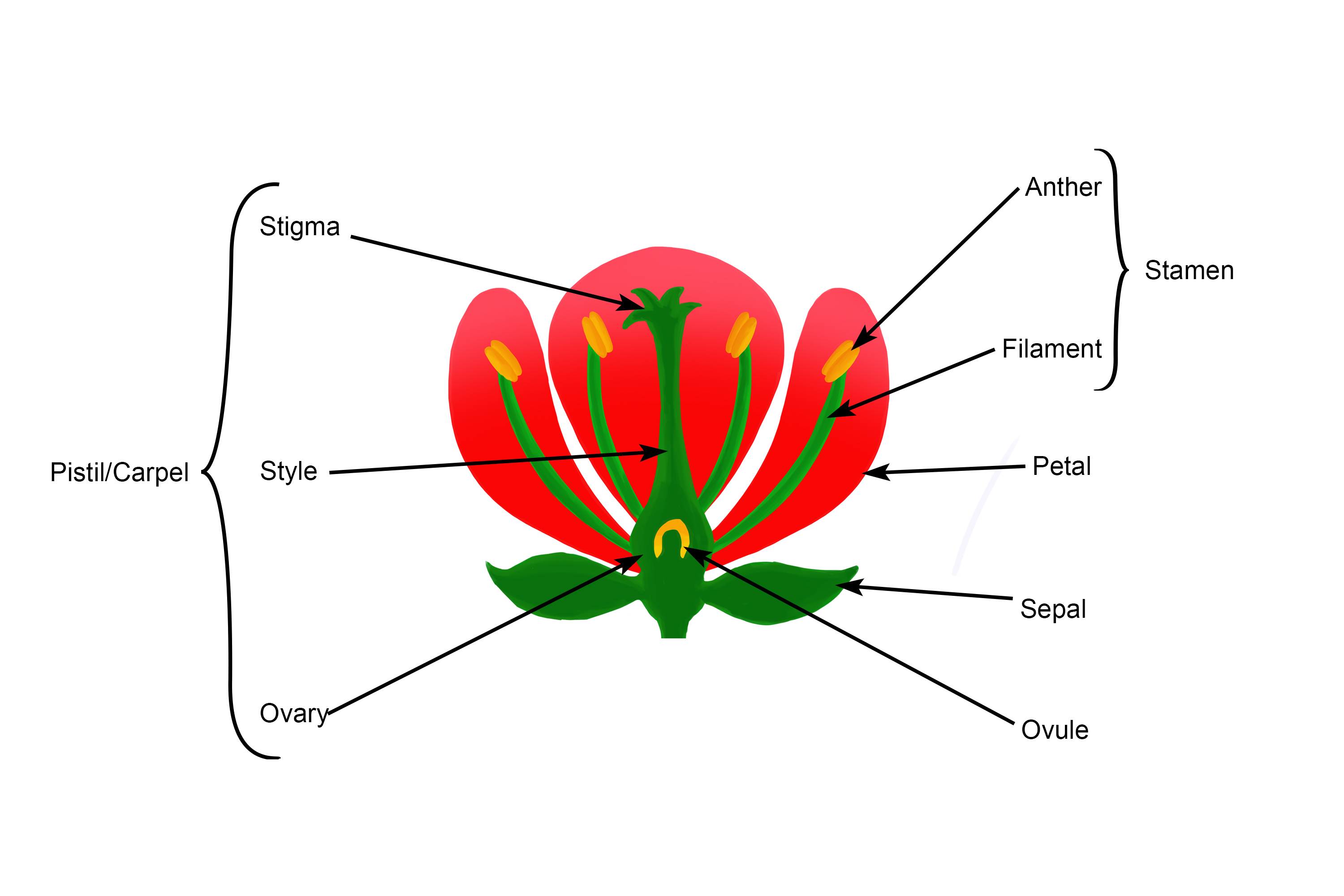
Hibiscus Flower Male And Female Parts Unit 6 Plant Form and Function Mrs. Johnson's Site
Printable Flower Diagrams. Using printable diagrams is a great way to teach and become familiar with all the parts of a flower. To download either the labeled diagram above or unlabeled printable diagram below, click on either the diagram itself or the caption. It will open using Adobe Reader. From here you will be able to either save the.
.jpg)
Plant Reproduction Plant Structure DS&JB
Parts of a Flower (Flower Anatomy) Including a Flower Diagram. Flowers are the parts of plants that give them beauty, scent, and they function as the plant's reproductive system. Flowers attach to the plant via the stalk. The Structure and Functions of Flowers. A flower has female and male parts. The male part of a flower is the stamen. The.
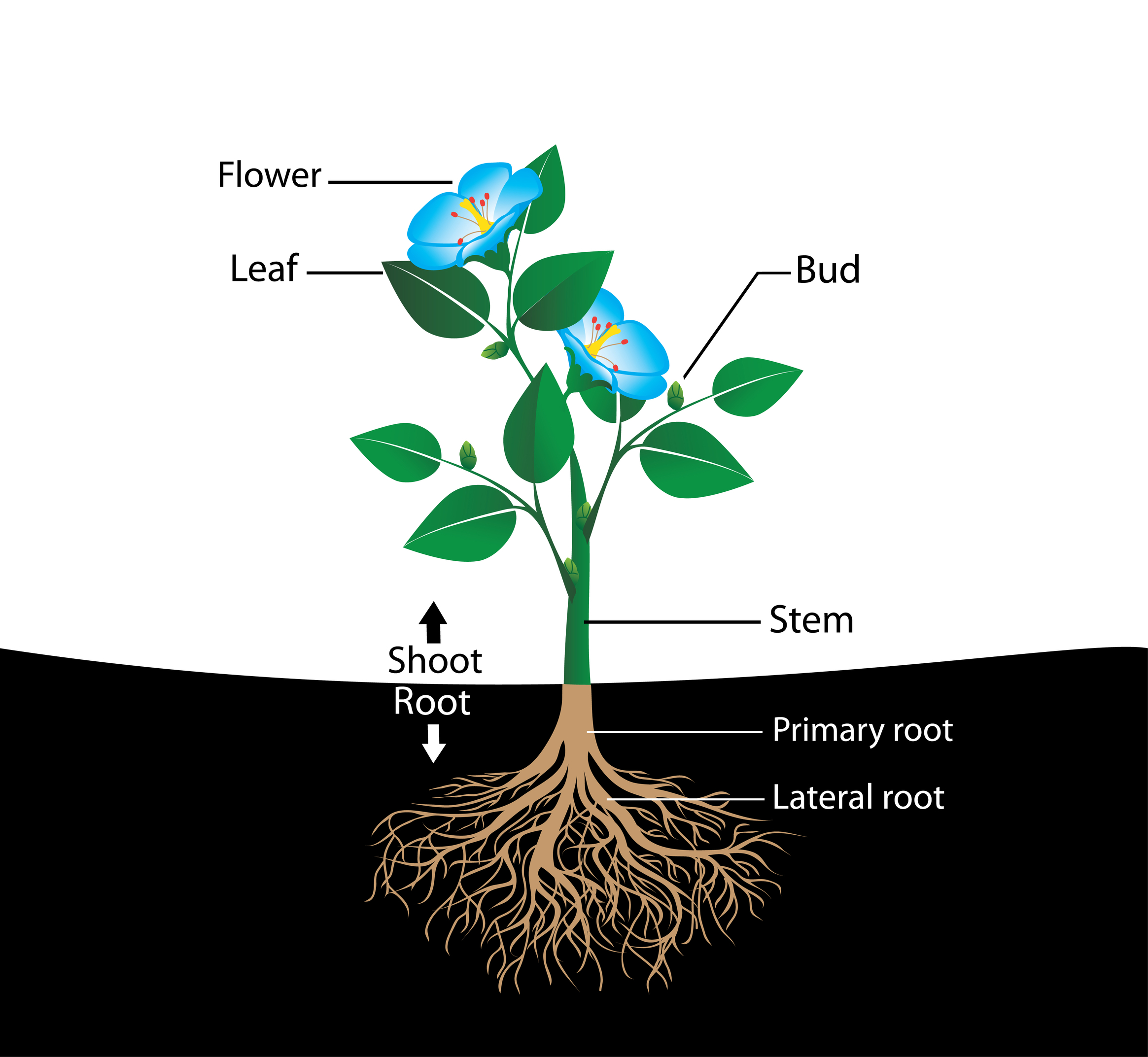
Parts of Flowering Plants
A typical diagram of a flower is divided into four main parts: 1) sepals, 2) petals, 3) stamen and, 4) carpel, each of them performing distinct functions. When a flower has all the four floral parts, it is called a complete flower. A flower missing any one of them is called an incomplete flower. Parts of a Flower Diagram. 1. Sepals.
Flower structure diagram / RHS Campaign for School Gardening
Figure \(\PageIndex{1}\): This diagram shows a long section through a flower. Starting from the bottom, there is a stem called the peduncle. The peduncle terminates in a region called the receptacle, where all of the parts of the flower are attached.. In many flowers, parts of a single floral whorl will be partially or completely fused together.

Parts of a Flower and Plant and Their Functions (8 Diagrams Flower, Cell, Leaf, Stem etc.)
Parts Of A Flower. The sepals, petals, stamens, and carpels are the most important components of a flower. Complete flowers are those that have all four of these components.. Parts Of A Flower Diagram. A typical flower is depicted in the diagram below. Notes: The four main components (petals, sepals, stamens, and carpels) are missing from.
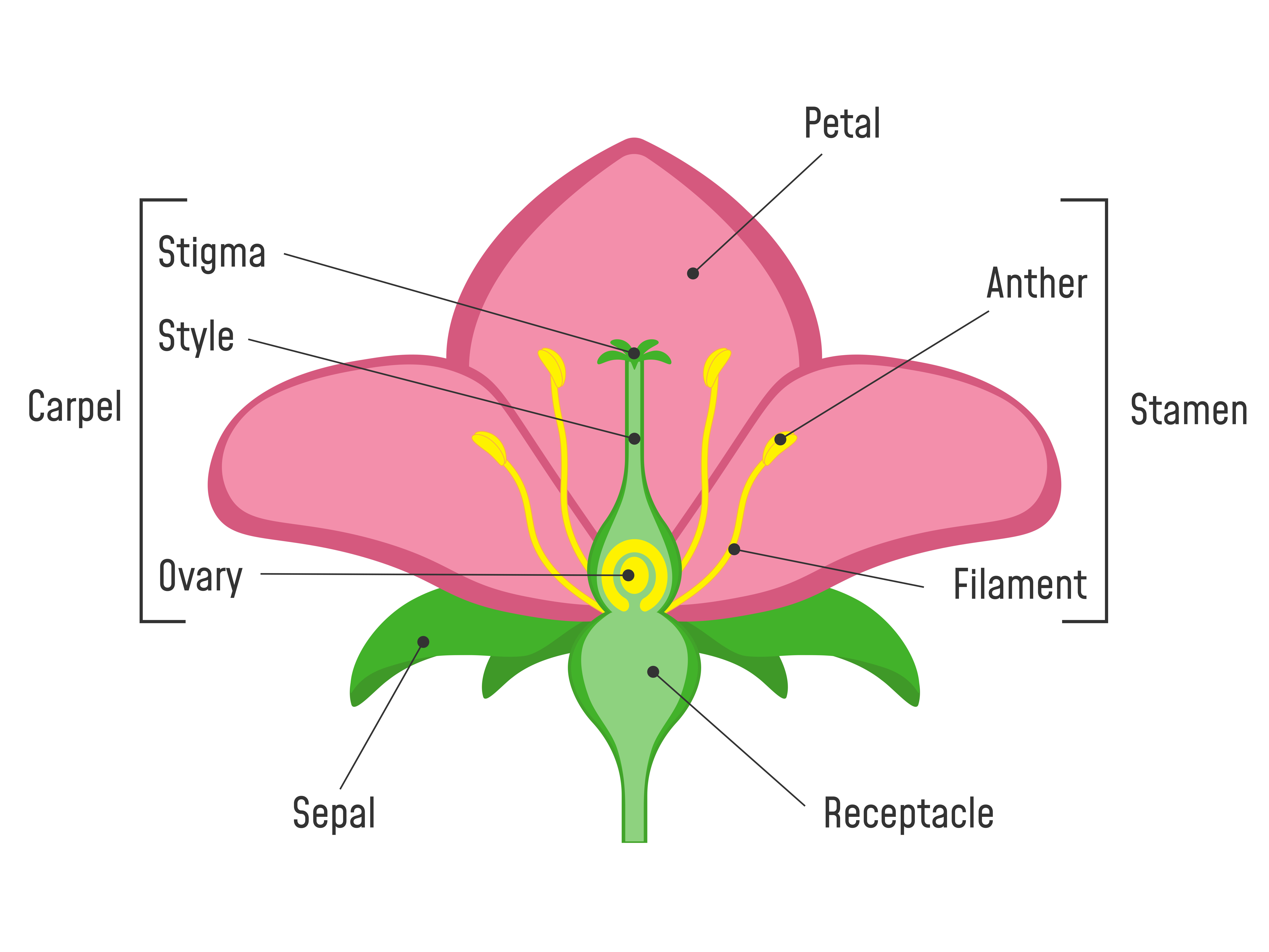
Female Parts Of A Flower Diagram Observe them and separate their parts. preparation to be
A complete flower consists of two different parts: Vegetative Part; Reproductive Part; Also read: Flowers and Inflorescence. Let us have a detailed look at the different parts of a flower. Flower - L abelled Diagram. Below is a well labelled and simple diagram of a flower for your better understanding.

Anatomy of Flowers
The four main parts of a flower include the carpel, stamen, petals and sepals. The carpel consists of three parts; stigma, style and ovary. The stamen contains the anther and filament. There are also several other parts of a flower such as receptacle, nectary, peduncle (stalk), pedicel, and perianth. All these parts of a flower collectively.
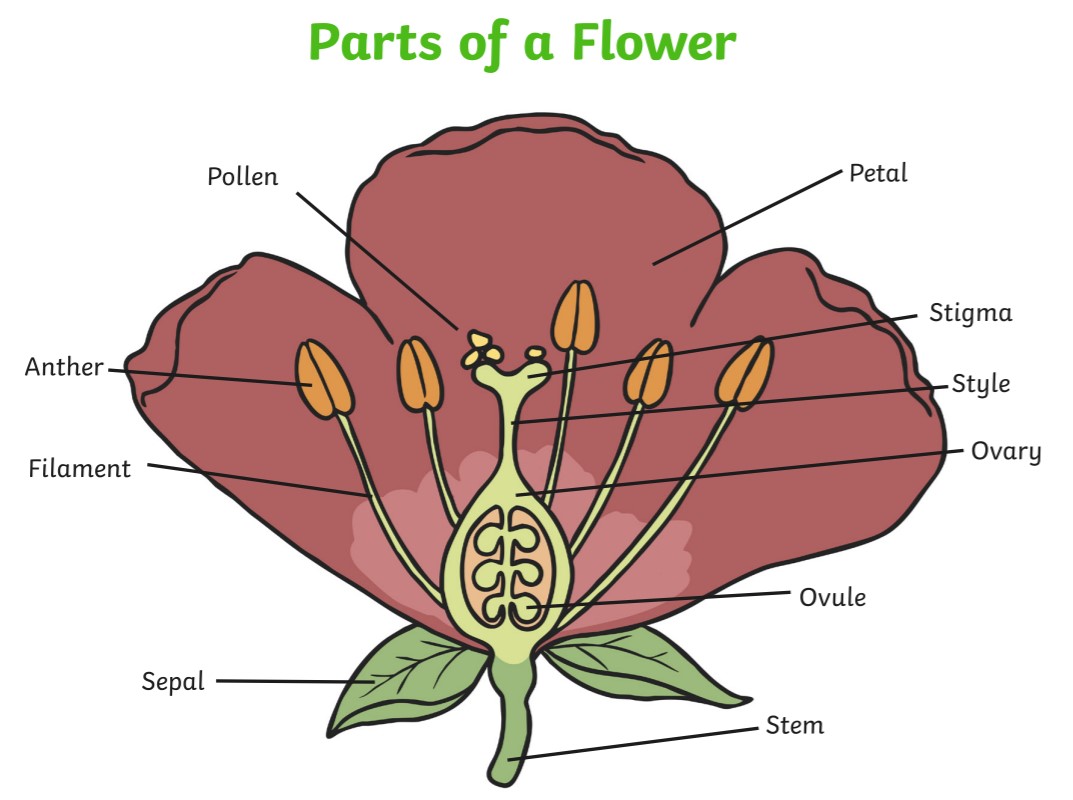
What is a Flower? Answered Twinkl Teaching Wiki Twinkl
Some flowers have all four of these basic structures. We call these complete flowers.Examples of plants with complete flowers include lilies and roses. Flowers missing one or more of the flower parts are called incomplete.Some, like dogwood, have both pistils and stamens but are missing sepals or petals; these are called perfect flowers.Other plant species separate the male and female.
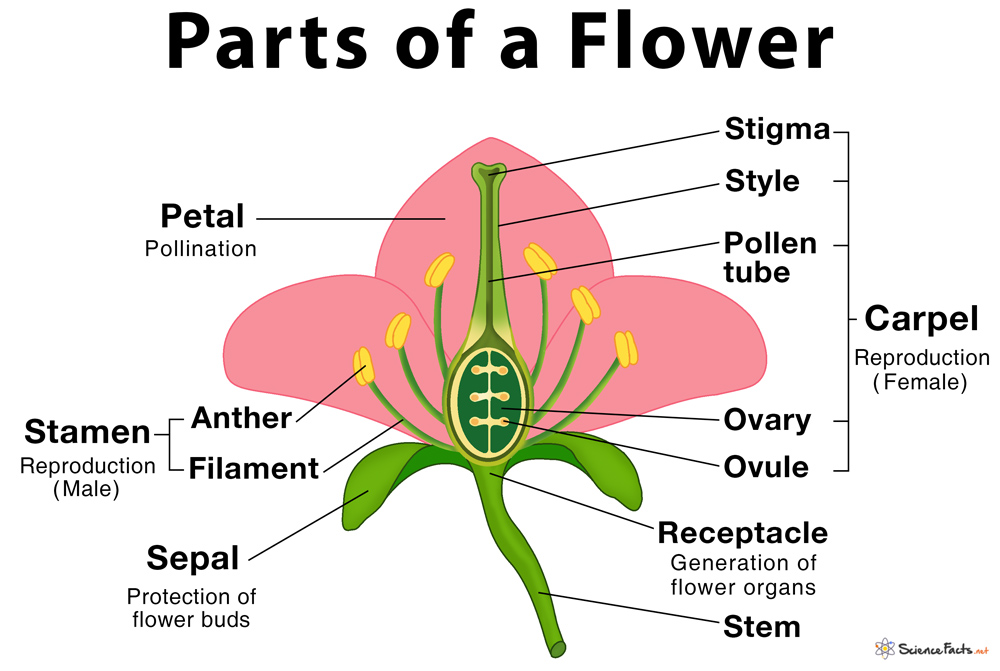
Parts of a Flower, Their Structure and Functions With Diagram
The parts of flower consist of four different kinds of whorls on the thalamus such as calyx, corolla, androecium and gynoecium. Calyx and corolla are accessory organs whereas, androecium and gynoecium are reproductive organs. Flowers are not only used for reproduction but also are a source of food for insects and birds which they feed on them.
